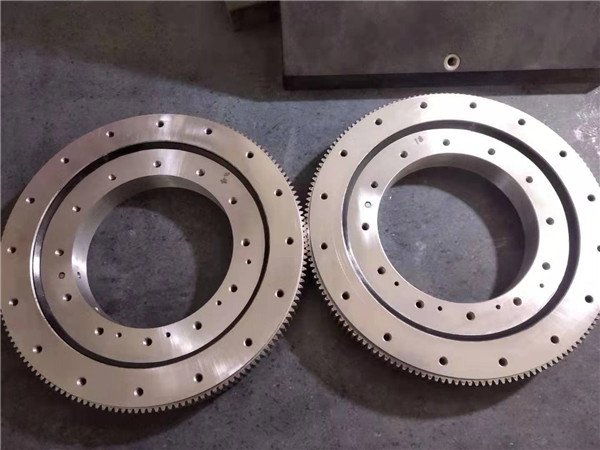How to installation slewing bearing soft belt
The right way to installation slewing bearing soft belt

The raceway of the slewing bearing device generally needs to be heat-treated, and the usual processes are: forging, roughing, quenching and tempering, finishing, smoothing, surface quenching of the raceway surface, and grinding of the raceway surface. The surface of the raceway surface is quenched to form a soft band. The so-called soft belt is an area that has not been heat treated. The formation of the flexible tape is necessary for the heat treatment process. In the final heat treatment process, due to the relatively large diameter of the raceway circle of the slewing ring, flame surface quenching is usually adopted by heating the surface of the workpiece to be hardened by acetylene and then adding water to cool, which is continuously performed. The heated flame spray gun and the water gun are mounted together while making a circular motion along the circle of the workpiece. Stop heating and spray immediately when moving to near 360 degrees. That is, the circular areas of heating and water spraying do not overlap. If there is an overlap in the circular area where heating and water spray occurs (heat treatment on the circle is greater than 360 degrees), cracking of the workpiece occurs. The tangential width of the unheat treated area is typically 15 mm. This 15 mm area is referred to as a soft belt in the slewing ring. It is often SoftZone in English. Under normal circumstances, the steel plate “S” is placed on the position where the soft belt is present in the workpiece to illustrate the specific soft belt position. Imported or domestically produced regular products usually have this very important mark. The position requirement of the flexible belt installation is essentially to improve the life of the bearing. From the perspective of the user and the manufacturer, it is better to install the position of the upper and lower loops of the slewing ring. Therefore, the manufacturer of the slewing bearing should accurately mark the position of the slewing ring, as the manufacturer and installer should properly install the slewing ring position as needed.
Because of the inevitability of the flexible belt on the slewing bearing device, it is required that the user who uses and selects the slewing bearing device should properly install the position of the soft belt to improve the service life of the bearing. The general principle is to try to install the flexible belt in the position where the soft belt carries the least pressure during the load change. Usually, the upper ring flexible belt of the slewing device is installed at a position perpendicular to the projection line of the pitch rotation surface. For example, the upper ring soft belt of the ship loader or the stacker reclaimer is installed at a position perpendicular to the center line of the cantilever and cut through the center of rotation. , that is, standing at the 90 degree position on the left or right side of the cantilever above the center of rotation. In the usual mechanical design, the flexible belt does not have the maximum state of force of the support rollers of the slewing bearing at this position. The installation position of the lower ring flexible belt of the slewing device is determined according to the center of gravity of the device and the range of the angle of rotation. If the angle of rotation is 100 degrees to the left and right, the maximum center of gravity of the upper part of the swivel is at the front. It is recommended to install the lower ring soft belt at the rear, that is, 180 degrees. If the position of the center of gravity change of the upper part of the swivel is equal in the front and rear positions, the angular position of the lower loop soft belt can be arbitrarily installed






